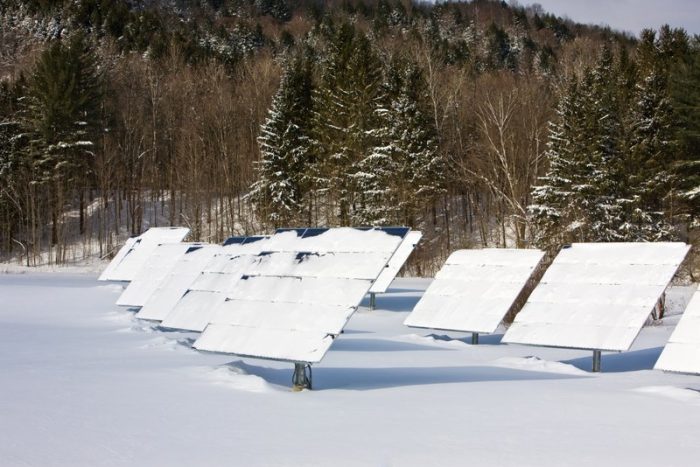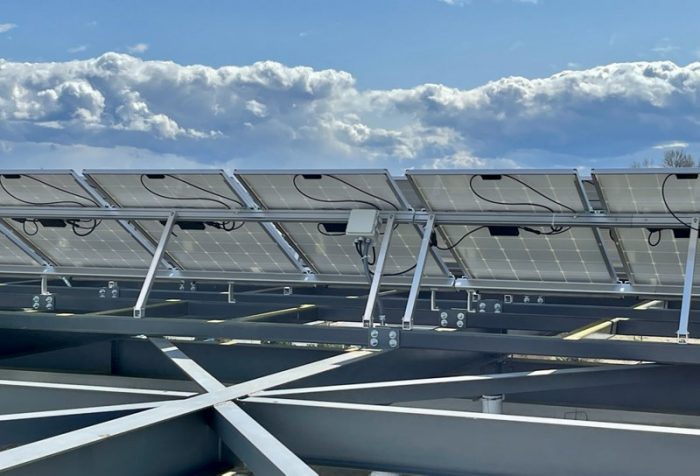
When it comes to safety practices working with solar PV technology in the field, judgement and awareness are key principles. “In the field” means in the environment, and the weather can change rapidly from day to day, as well as through each season. It will always affect your work.
The safety rules and procedures at any solar site are only as good as the people who keep them outdoors amid the PV panels. No matter what your level of experience, the environmental conditions where you’re working are a potentially unpredictable part of any job. In every season, safety begins — and ends — with situational awareness before you head out to the array.
Conditions at the facility
Knowing the weather forecast can help you understand what to expect at the facility, both what you should look for and how to evaluate any issues you find. Make sure you get briefed or have a chance to ask questions about the condition of the equipment you’ll be working on; damaged modules, connectors, or tracker arms can all create additional electrical shock hazards.
Tools ready
Use tools with the proper category rating for the job; for most utility-scale PV installations, that’s (at least) CAT III. Verify with a known source or use a tester to make sure your meter is in good working order before you head out; it can be a long walk back to the truck.
Appropriate safety gear
Personal protective equipment (PPE) — kept in serviceable condition and properly worn — protects you from serious injury (or worse) in the event of an equipment failure or transient voltage. In addition to the appropriate level of PPE, you may also have to contend with excessive heat, moisture, or cold. Having the right gear at hand helps reduce your risks.
Test first
Always assume maximum potential until you verify otherwise. Don’t start work on a circuit, a panel, or a cable until you test it. If you’re working on a PV panel at night, be mindful of the voltage and weather changes that sunrise can bring.
Troubleshooting in changeable conditions

Out in a PV installation, the weather can change unexpectedly. The electrical checks are the same, but the conditions in which you’re making them can be variable in the extreme. Your safety — and the completion of your work — depends on how you adapt to the conditions around you.
Sun | At a solar facility, the sun is always a concern. Solar panels generate electricity whenever they’re exposed to the sun’s energy. Extreme heat may reduce the amount of electricity a PV panel can generate, but it also makes your working conditions more dangerous. Heat-related illnesses are some of the most frequent root causes of injuries. Even on cloudy days, when irradiance is at its lowest, sunburns are still possible. Always protect yourself. Your PPE offers some cover; use sunscreen where you’re exposed, stay hydrated, and take breaks to avoid heat-related issues.
Moisture | Depending on the location and the season, you may encounter high humidity, slippery surfaces, and standing water, along with rain, sleet, or snow. A full arc flash suit is no protection if it gets wet — what about your tools, the leads, the terminals, or your work area? You have to understand what moisture does to your tools, your PPE, and the electrical systems you’re working on (including manufacturer recommendations).
Temperature | Weather changes a PV panel’s output — but whatever the weather or temperature, if there’s daylight, it’s still producing electricity. Solar modules can produce more current when it’s cold than when it’s very hot. It’s dangerous to assume that the system is at anything less than maximum potential unless and until you verify it yourself. Remember that cold temperatures don’t alleviate the arc flash danger. Make sure that all of the cold weather gear you’re using is rated appropriately for the work being done, and plan the job accordingly.
Wind | High winds pose a danger to PV panels and electricians alike, yet no universally followed standard exists for working under windy conditions. Most facilities use some kind of wind advisory system. Make sure you know what the rules are where you’re working — in any event, use your best judgement about whether it’s safe to work.
In every season, the weather can have a significant impact on you and the system you’re working on. Be aware of the environmental conditions that will impact your safety before you head into the field, and stay mindful while you’re out there. It will ultimately save time as you work. And it may even save your life.
Stephen San Juan is the co-CEO and managing member of Rise Renewable Energy, LLC, provider of safety and technical training to the renewable industries. Sean Silvey is a product application specialist with Fluke Corporation, a manufacturer of electrical test and measurement tools.
— Solar Builder magazine
[source: https://solarbuildermag.com/featured/solar-pv-field-safety-tips-for-all-weather-conditions/]
 Series modules and work seamlessly with their EverVolt battery storage — all warrantied by one of America’s most trusted brands.
Series modules and work seamlessly with their EverVolt battery storage — all warrantied by one of America’s most trusted brands.
Leave a Reply
You must be logged in to post a comment.